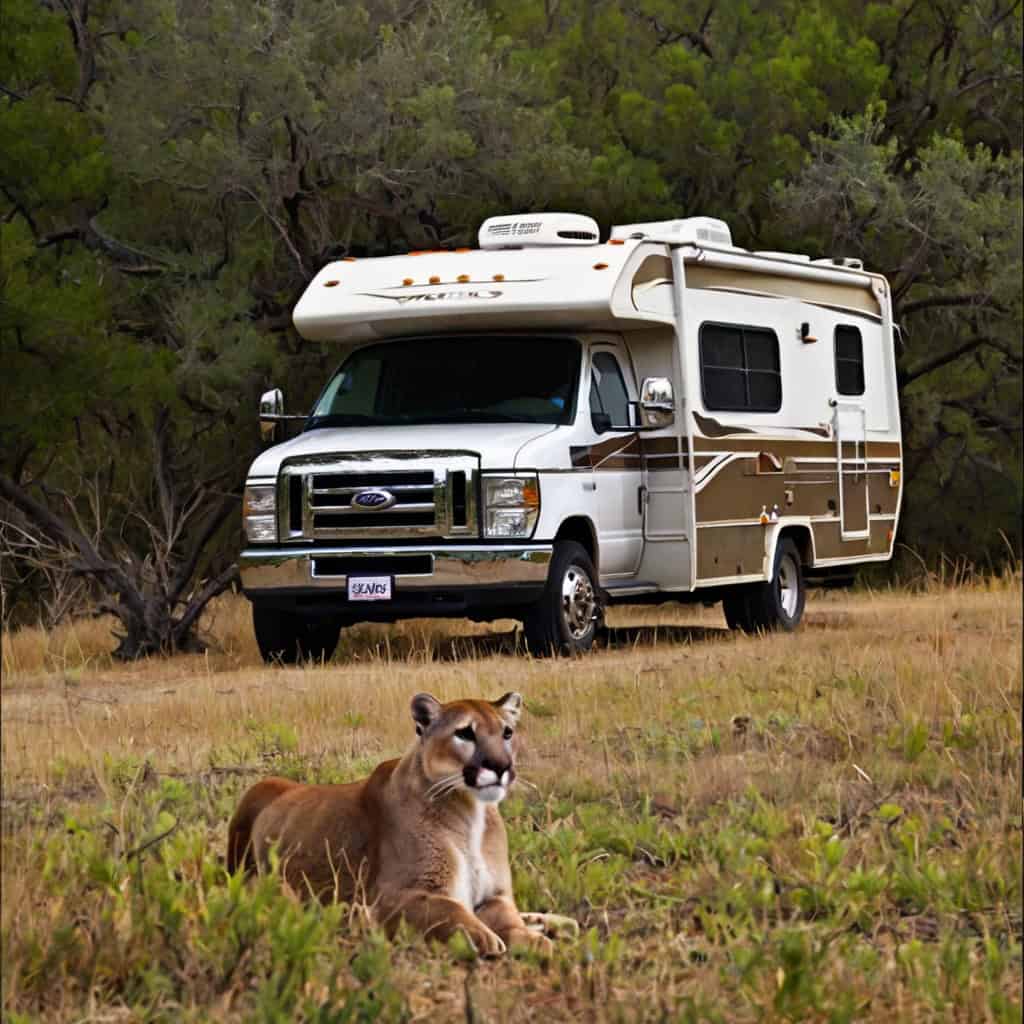
North Texas RV Campers Cautious After Mountain Lion Sighting
If you make a purchase using the links in this article, we may make a commission. And, as an Amazon Associate, I earn from qualifying purchases. See the full disclosure here.
North Texas RV Campers Cautious After Mountain Lion Sighting have heightened their vigilance following the sighting of a mountain lion. This rare encounter has sparked both intrigue and concern among nature enthusiasts and local residents alike. Let’s explore the incident and discuss how to stay safe in the wild while maintaining an appreciation for these majestic creatures.
A Surprising Visitor: The Mountain Lion Sighting
The typically serene atmosphere of a North Texas RV camp was recently disrupted by the unexpected appearance of a mountain lion. The elusive predator was captured on video, sending a wave of caution and curiosity through the camping community.
- Location: The sighting occurred at a popular RV camp known for its scenic views and tranquil environment.
- Time: The mountain lion emerged during the early morning hours, a time when the camp is usually peaceful.
- Response: Campers immediately notified local authorities and wildlife experts to assess the situation and ensure everyone’s safety.
This encounter serves as a reminder of the delicate balance between human habitation and wildlife preservation, particularly in areas where nature thrives.
Understanding Mountain Lions: Facts and Behavior
Mountain lions, also known as cougars or pumas, are elusive and typically avoid human interaction. Understanding their behavior can help dispel myths and reduce fear.
Key Characteristics of Mountain Lions
- Size: Adult mountain lions can weigh between 90 to 160 pounds and measure about 5 to 9 feet from nose to tail.
- Diet: These carnivorous cats primarily hunt deer but are also known to prey on smaller animals when necessary.
- Habitat: Mountain lions prefer secluded, rocky areas, but can adapt to various environments, including semi-arid regions.
- Behavior: Solitary and nocturnal, they spend the majority of their time hunting or resting away from human activity.
Why Mountain Lions Might Approach Campsites
- Food scarcity: In instances of food scarcity, mountain lions might venture closer to human-occupied areas.
- Curiosity: Young, inexperienced lions may roam into unknown territory out of curiosity.
- Habitat encroachment: Human expansion into wildlife territories can lead to increased sightings and interactions.
Safety Tips for Campers in Mountain Lion Territories
While the mountain lion sighting in North Texas serves as an exciting tale of wildlife encounters, safety remains paramount. Here are some essential safety measures to consider:
Understand Your Surroundings
Before setting up camp, familiarize yourself with the local wildlife and potential hazards.
- Check local wildlife reports and campground announcements for any recent sightings.
- Be aware of the typical habitats and patterns of animals in the area.
Protect Your Campsite
Your campsite setup can deter or attract wildlife, including mountain lions.
- Properly store food: Always keep food securely stored in wildlife-proof containers.
- Dispose of waste: Dispose of garbage appropriately and keep your site clean.
- Lighting: Keep your campsite well-lit during the night to deter nocturnal visits.
Be Prepared for Encounters
Knowing how to act if you encounter a mountain lion can make a crucial difference.
- If you see a mountain lion, do not run. Instead, maintain eye contact and slowly back away.
- Make yourself appear larger by raising your arms and speaking firmly.
- If the lion acts aggressively, throw stones or branches without turning your back.
- Report any sightings to local wildlife authorities to help ensure public safety.
Coexisting with Wildlife: A Community Effort
Preserving the balance between human activity and wildlife is a shared responsibility. Communities near natural habitats can play a crucial role in protecting both.
- Education: Encouraging educational programs about local wildlife can build awareness and respect.
- Conservation efforts: Supporting conservation initiatives helps maintain healthy ecosystems.
- Community involvement: Engaging with local wildlife organizations strengthens community bonds and environmental stewardship.
Conclusion: A Harmonious Coexistence
The recent mountain lion sighting in North Texas serves as a reminder of the beauty and unpredictability of nature. By staying informed, taking appropriate safety precautions, and supporting conservation efforts, we can enjoy the wonders of the wilderness while coexisting safely and respectfully with the wildlife around us.
As we cherish our experiences in the great outdoors, let’s remain vigilant and contribute to a harmonious world where humans and wildlife thrive side by side.


